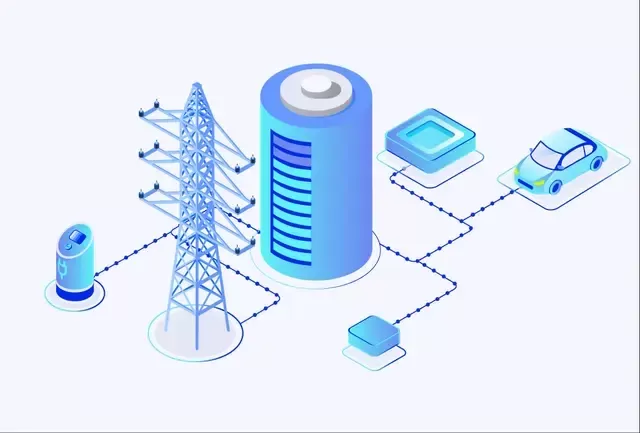Notifications

7 minutes, 36 seconds
-37 Views 0 Comments 0 Likes 0 Reviews

Introduction
As a professional EV charger manufacturer in China, Topper Company provides reliable electric vehicle charging stations and comprehensive solutions to meet your charging needs.
As electric vehicle (EV) adoption continues to grow, the need for efficient energy distribution and intelligent charging solutions becomes increasingly important. The Open Smart Charging Protocol (OSCP) plays a key role in managing the balance between electricity supply and demand in EV charging networks. This open standard ensures smooth communication between charge point operators (CPOs), distribution system operators (DSOs), and energy management systems, helping to optimize energy use and support grid stability.
In this article, we explore the core features of OSCP, its evolution, and how it contributes to smarter energy management in EV charging infrastructure.
What is the OSCP Protocol?
The Open Smart Charging Protocol (OSCP) is a communication standard designed to optimize electricity distribution in EV charging networks. It enables the forecasting and regulation of energy consumption to maintain a stable and efficient power supply. Through OSCP, site owners and DSOs can share a 24-hour forecast of grid capacity with charge point operators, allowing them to adjust EV charging schedules to match available power.
Hosted by the Open Charge Alliance (OCA), OSCP provides a structured framework for integrating EV charging stations into larger energy management systems. By aligning charging activities with real-time grid capacity, OSCP helps enhance grid stability, prevent overloads, and ensure cost-effective electricity usage.
The Evolution of OSCP: From Version 1.0 to 2.0
OSCP has evolved significantly since its inception:
OSCP 1.0 (2015): The original version introduced a standardized method for smart charging, allowing DSOs to communicate energy availability to charge point operators. It focused primarily on coordinating EV charging.
OSCP 2.0 (2020): The updated version expanded beyond smart EV charging to integrate electric vehicles into a broader energy ecosystem. The new functionalities support various energy management applications, recognizing the growing role of EVs in the energy network of the future.
How Does OSCP Work?
OSCP 2.0 operates using a structured domain model, defining the roles and interactions of different stakeholders within the energy system. The key components include:
Flexibility Resource: A device that consumes or generates electricity in a controllable manner. This includes EVs, battery storage systems, and heat pumps. These resources can adjust their energy consumption or production based on grid capacity.
Flexibility Provider: Typically charge point operators, flexibility providers manage the energy consumption of these resources, ensuring EVs charge within specified energy limits.
Capacity Provider: Usually a DSO or an Energy Management System (EMS), a capacity provider oversees the energy network, setting energy limits for flexibility providers. They do not directly control charging devices but instead regulate available capacity.
The protocol ensures energy distribution stays within the network’s safe operational limits. By aligning charging schedules with the capacity provider’s forecast, OSCP helps optimize energy use and avoid grid congestion.
Applications of OSCP
OSCP is a powerful tool for charge point operators, enabling the dynamic management of power loads across EV charging stations. By utilizing real-time data, such as grid capacity, electricity rates, and demand patterns, OSCP optimizes charging schedules and speeds. For example, during peak demand, charging can be reduced to prevent grid overload, while during periods of excess energy, charging speeds can be increased to improve efficiency.
The protocol’s ability to adjust charging profiles based on a 24-hour forecast of grid capacity helps operators anticipate fluctuations in power availability, maintaining a balanced and stable grid. This proactive management supports sustainable energy usage, optimizes resources, and delivers a seamless charging experience for EV users.
Benefits of OSCP in EV Charging
Implementing OSCP within EV charging infrastructure offers multiple benefits:
Grid Stability: OSCP helps prevent grid overloads by forecasting available capacity and adjusting charging loads accordingly, enhancing the reliability of the power system.
Optimized Energy Use: The protocol ensures efficient energy distribution, reducing unnecessary power consumption and aligning charging with renewable energy availability.
Cost Savings: Charge point operators can optimize charging schedules to take advantage of lower electricity rates, reducing operational costs for both consumers and service providers.
Scalability: OSCP’s open standard enables easy integration with different energy management systems, making it a future-proof solution for expanding EV infrastructure.
Enhanced Communication: The protocol standardizes communication between DSOs, CPOs, and energy service providers, fostering better coordination and efficient energy distribution.
Future Prospects of OSCP in the EV Industry
As the shift toward electrification continues, smart charging solutions like OSCP will become even more essential. Some of the future developments in OSCP include:
Vehicle-to-Grid (V2G) Integration: OSCP could enable bidirectional energy flows, allowing EVs to supply power back to the grid during peak demand periods.
Renewable Energy Synergy: By aligning EV charging with renewable energy generation, OSCP can enhance sustainability and reduce reliance on fossil fuels.
Advanced Energy Forecasting: Future OSCP versions may integrate artificial intelligence and machine learning to improve energy demand predictions and optimize grid performance.
Conclusion
The Open Smart Charging Protocol (OSCP) provides a robust and scalable framework for efficient energy distribution in EV charging networks. By facilitating real-time communication between DSOs, charge point operators, and energy management systems, OSCP ensures that EV charging remains sustainable, cost-effective, and compatible with grid operations.
As smart charging technologies continue to evolve, OSCP will be a cornerstone of intelligent energy management in the electric mobility era. With the growing adoption of EVs, OSCP's role in improving energy efficiency and grid stability will only become more significant, shaping the future of EV charging infrastructure.Know more about Google SEO Directory
China EV Chargers EV Charger Manufacturer EV Charging Solutions

